Description
What is Pyritinol?
Pyritinol is a dietary substance derived solely from dietary substances. The nutrient properties of Pyritinol have been demonstrated to be similar to Pyridoxine (vitamin B6). A key to understanding Pyritinol’s wide mode of action was shown first in 1989. Two Czech scientists performed sophisticated experiments to determine free radical-quenching power. Pyritinol proved to be far superior to the other acknowledged antioxidants.
Free-radical interactions are implicated in the development of many concerns including radiation injury, atherosclerosis, arthritis, cancer and aging. It was found that Pyritinol exerted a pronounced scavenger action against hydroxyl radicals. Brain proteins were protected from hydroxyl radical damage by Pyritinol in experiments. The superior hydroxyl radical antioxidant effect of Pyritinol provides much of the nutrient benefits of Pyritinol. The brain is particularly vulnerable to free radical damage. The potency of Pyritinol to protect proteins in the brain has been recognized since the 1960s. Another key benefit of Pyritinol has been known to be its ability to normalize glucose transport across the blood-brain barrier and to increase brain cell energy production from glucose, the sugar form that our whole body runs on.
A surprising effect of Pyritinol was first reported in 1993: Pyritinol may be an effective immune system nourisher through its stimulation of neutrophil migration.
Another key property of Pyritinol is its vigilance-enhancing effect. Pyritinol nourishes nerve activity in the Locus Coeruleus (LC). In humans, the number of neurons in the [LC] declines with advancing age.
What are the Nutritional Benefits of Pyritinol?
1. It nourishes normal brain structure and form, as seen by its support for beneficial therapeutic outcomes in dementia, organic brain syndrome, head injury, stroke aftermath, coma, and cerebral circulatory disorders.
2. It nourishes normal structure and function with regard to brain aging.
3. It nourishes increased focus and concentration, memory, alertness and information processing in both young and old.
4. It may nourish normal structure and function in learning impaired children, to increase drive, alertness, concentration and learning ability.
5. It may be useful as part of a health-optimizing antioxidant nutrient program, along with vitamins C and E, selenium, zinc and lipoic acid.
6. It may be useful to nourish normal joint structure and function.
Discounts are available for package purchases.
Think clearer, remember more and feel better.
Suggested Serving: One (1) to three (3) capsules daily as a dietary supplement. Best when taken in intervals throughout the day.
Notice:
Individual results may vary. You should always consult with your physician before starting this product or any health-related program. Galantamine is currently not recommended for use by young individuals.
Precautions:
If sensitivity or mild digestive upset occurs, reduce dosage or discontinue use. For adult use only. This product should not be used by those with moderate to severe depression. Do not use if tamper resistant seal is missing or broken. Consult your physician prior to use if you are pregnant or nursing.
KEEP OUT OF REACH OF CHILDREN
Our Supplements contain only the purest natural ingredients according to the highest standards. We use only the most natural fillers when needed. There is a difference and we have it! Read More.
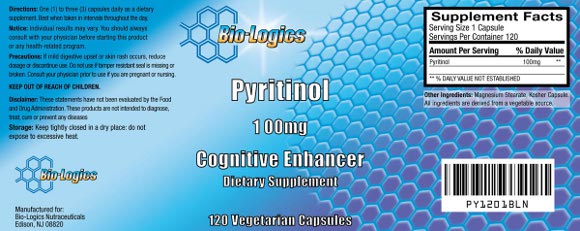
DISCLAIMER
THESE STATEMENTS HAVE NOT BEEN EVALUATED BY THE FOOD AND DRUG ADMINISTRATION. THESE PRODUCTS ARE NOT INTENDED TO DIAGNOSE, TREAT, CURE OR PREVENT ANY DISEASE. ALL INFORMATION FOR ALL PRODUCTS IS EDUCATIONAL ONLY AND IS TAKEN FROM VARIOUS THIRD PARTY SOURCES, AVAILABLE ON REQUEST. IT DOES NOT AND SHOULD NOT REPLACE THE ADVICE OF YOUR PHYSICIAN. THESE PRODUCTS ARE OFFERED AS DIETARY SUPPLEMENTS ONLY. WE DO NOT ENDORSE OR ADOPT THE INFORMATION AND CLAIMS CONTAINED IN THE THIRD PARTY SOURCES.
Journals
Hindmarch I, Coleston DM, Kerr JS
Psychopharmacological effects of pyritinol in normal volunteers.
Neuropsychobiology. 1990-91;24(3):159-64.
PMID: 2135070; UI: 92228153
Life Sci 1994;55(25-26):2057-66
Interaction between psychological and pharmacological treatment in cognitive impairment.
Deberdt W
UCB Pharma, Chemin du Foriest, Braine-l’Alleud, Belgium.
Cooper AJ, Magnus RV
A placebo-controlled study of pyritinol (‘Encephabol’) in dementia.
Pharmatherapeutica 1980;2(5):317-22
PMID: 7001490, UI: 81055064
Pavlik A, Pilar J.
Protection of cell proteins against free-radical attack by nootropic drugs: scavenger effect of Pyritinol confirmed by electron spin resonance spectroscopy.
Neuropharmacology. 1989 Jun;28(6):557-61.
PMID: 2547179; UI: 89330723
Knezevic S, Mubrin Z, Risberg J, Vucinic G, Spilich G, Gubarev N, Wannenmacher W.
Pyritinol treatment of SDAT patients: evaluation by psychiatric and neurological examination, psychometric testing and rCBF measurements.
Int Clin Psychopharmacol. 1989 Jan;4(1):25-38.
PMID: 2687355; UI: 90078951
Camus JP, Crouzet J, Prier A, Bergevin H
[Study of 70 cases of rheumatoid polyarthritis treated by pyrithioxin with a 1-year follow-up]
Rev Rhum Mal Osteoartic 1978 Jul-Sep;45(7-9):487-90
PMID: 725465, UI: 79076339
Greiner HE, Haase AF, Seyfried CA.
Neurochemical studies on the mechanism of action of pyritinol.
Pharmacopsychiatry. 1988 Aug;21 Suppl 1:26-32.
PMID: 2905813; UI: 89113408
Herrmann WM, Kern U, Rohmel J.
On the effects of pyritinol on functional deficits of patients with organic mental disorders.
Pharmacopsychiatry. 1986 Sep;19(5):378-85.
PMID: 3534901; UI: 87041668

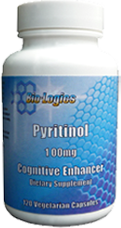
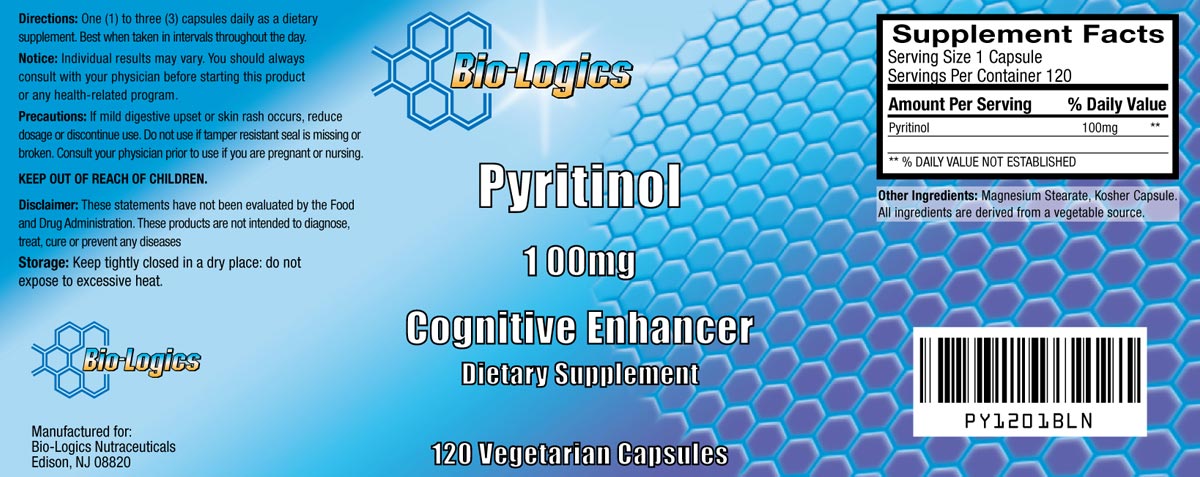
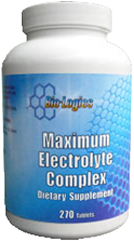

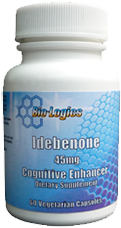
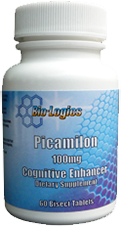
Reviews
There are no reviews yet.